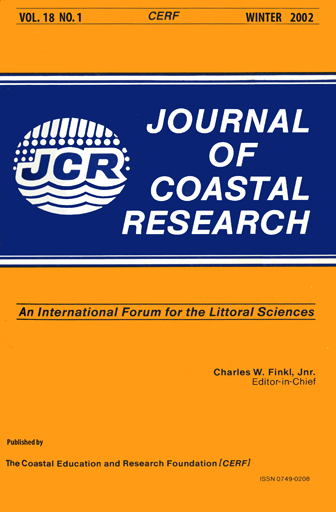Modulation of Surf Zone Processes on a Barred Beach Due to Changing Water Levels; Skallingen, Denmark
Keywords:
Waves, currents, tides, storm surges, sediment transport, morphodynamicsAbstract
Three field experiments on surf zone morphodynamics were conducted on a beach along the exposed Danish North Sea coast. This beach is microtidal (spring tidal range approximately 1.7 m) but it is characterized by a relatively large ratio between spring tidal range and near shore gradient (TR/β). Surf zone processes were modulated due to water level changes occurring at tidal and storm surge frequencies. Using cross-shore arrays of electromagnetic current meters, pressure sensors and optical backscatter sensors, it was found that offshore and surf zone wave heights increased with increasing water levels, while for selected instrument positions, cross-shore mean current speeds increased at high tide in the intertidal zone and at low tide in the subtidal zone. When subtidal bars were linear and shore-parallel, mean cross-shore currents were directed offshore; in the case of three-dimensional bars featuring shoals and rip currents, mean currents were directed onshore across bar s and offshore in rip channels with maximum current speeds at low tide. In consequence, net sediment transport patterns were modulated on a tidal time scale. At times of high water levels, sediment transport tended to be directed onshore in the subtidal zone and offshore in the intertidal zone with the reverse occurring when water levels were relatively low. Conceptually, this should lead to less accentuated bar topography in comparison to tideless beaches and such modulations are probably a major reason for the low-relief and comparatively stable bar features generally found on beaches subjected to tides. Finally, it is speculated that on longer time scales, systematic changes in water level may result in systematic and predictable profile responses.


